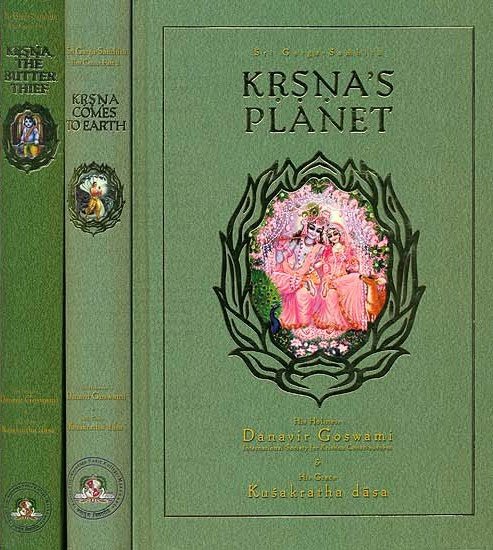Garga Samhita (English)
by Danavir Goswami | 425,489 words
The Garga-samhita Verse 4.3.3, English translation, including word-by-word: This text represents a Vaishnava scripture which narrates the life Krishna, It was composed in seventeen cantos by Garga Muni: an ancient sage and priest of the Yadu dynasty having. This is verse 4 of Chapter 3 (The Story of the Mithila Women) of Canto 4 (madhurya-khanda).
Verse 4.3.3
Sanskrit text, transliteration and word-by-word meaning:
मार्गशीर्षे शुभे मासि
चक्रुः कात्यायनी-व्रतम्
उपचारैः षोडशभिः
कृत्वा देवीं मही-मयीम्
mārgaśīrṣe śubhe māsi
cakruḥ kātyāyanī-vratam
upacāraiḥ ṣoḍaśabhiḥ
kṛtvā devīṃ mahī-mayīm
mārgaśīrṣe—margasirsa; śubhe—auspicous; māsi—in the month; cakruḥ—did; kātyāyanī-vratam—a vow to worship goddess Durga; upacāraiḥ—with offerings; ṣoḍaśabhiḥ—sixteen; kṛtvā—doing; devīm—to the goddess; mahī-mayīm—a deity made of clay.
English translation of verse 4.3.3:
During the auspicious month of Mārgaśīrṣa (November-December) they observed a vow to worship goddess Kātyāyanī. They made a clay deity of the goddess and worshiped her with sixteen offerings.
